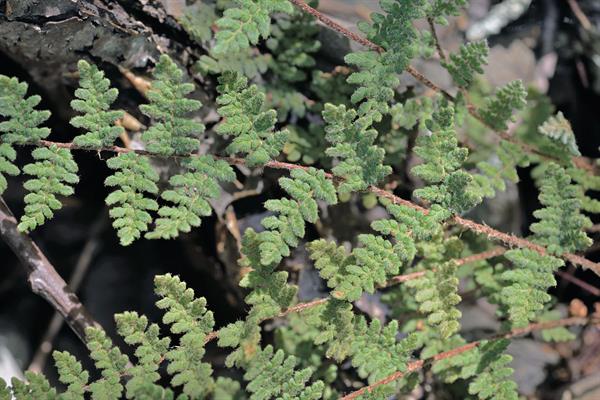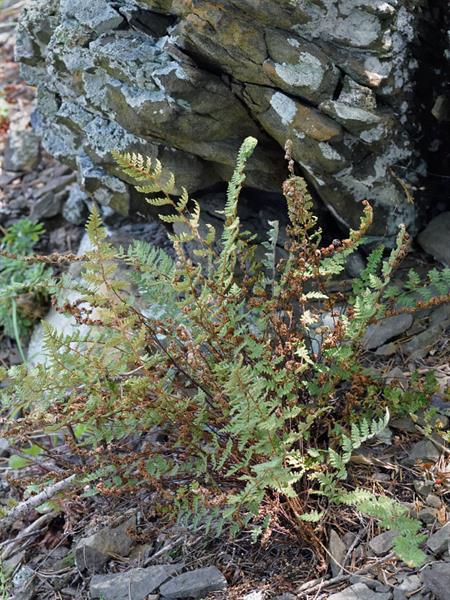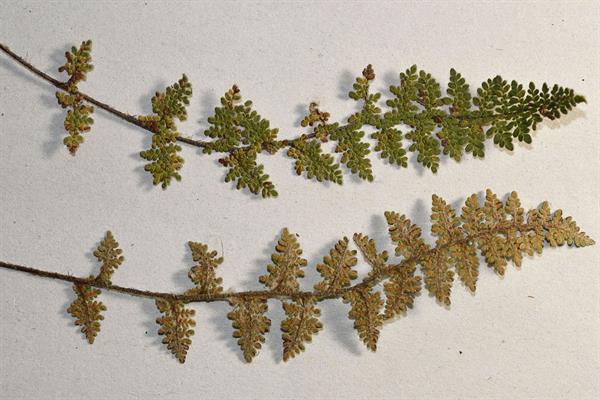
Origin/Endemic status: Native
Other Comments: The ultimate segments of the pinnules are roundish and closely spaced, so that they overlap the adjacent segments of the pinnule and the segments of the adjacent pinnule. These characters do not match some descriptions (such as in Z). Whether or not "Cheilanthes" castanea is distinct from or merely a form of "Cheilanthes" eatonii is controversial. Most plants (including those from the se. United States) are apomictic triploids of unknown parentage. The complex is under study by A. Grusz and M. Windham (Grusz, pers. comm., 2014).
Synonymy: = K3, K4, Grusz & Windham (2013); = Cheilanthes eatonii Baker – Ar, C, ETx1, FNA2, GrPl, K1, Meso1, Tx, TxFerns; = Hemionitis eatonii (Baker) Christenh. – Christenhusz, Fay, & Byng (2018); > Cheilanthes castanea Maxon – Va, W, WV, Lellinger (1985)
Heliophily: 7
Hover over a shape, letter, icon, or arrow on the map for definition or see the legend.
 © Gary P. Fleming | Original Image ⭷
© Gary P. Fleming | Original Image ⭷ © Gary P. Fleming | Original Image ⭷
© Gary P. Fleming | Original Image ⭷ © Gary P. Fleming | Original Image ⭷
© Gary P. Fleming | Original Image ⭷ © Gary P. Fleming | Original Image ⭷
© Gary P. Fleming | Original Image ⭷Feedback
See something wrong or missing on about Myriopteris rufa? Let us know here: (Please include your name and email if at all complicated so we can clarify if needed.)
Cite as...